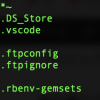MacでDockerが遅いとお嘆きの人たちへ
どうしても、Mac上で直接操作するのよりもDockerで操作する時に遅くなってしまいます。
DockerからMacのファイルシステムにアクセスする時に特に遅くなってしまいます。
(今回の記事の対象者として「macでDockerを使ってコードを書いたりしている人」と仮定してます。)
という事になります。
となりそうですが、それをこれから詳しく解説していきます。
必要な物
- VirtualBox
- Vagrant
- Visual Studio Code
- Visual Studio Code – Remote Developmentプラグイン
不要になる物
- Docker Desktop for mac
今回必要なツール、それぞれの簡単な解説
VirtualBox
Vagrant
Visual Studio Code
ということで、まずはVirtualBoxとVagrantとVisual Studio Codeを入れていきます。
それぞれの公式へのリンク
Vgrant公式
https://www.vagrantup.com/
こちらからVagrantをダウンロードします。
VirtualBox公式
https://www.virtualbox.org/
こちらからVirtualBoxをダウンロードします。
Visual Studio Code公式
https://azure.microsoft.com/ja-jp/products/visual-studio-code/
こちらからVisual Studio Codeをダウンロードします。
手順
VirtualBoxとVagrantはdmg形式でダウンロードなので、開いて中にあるインストーラを使ってインストール完了させます。
Visual Studio CodeはZIPなので、解凍してアプリケーションフォルダに Visual Studio Codeを移動します。
これで準備は整いました。
ターミナルを開いて
vagrantと入力してみましょう。
$ vagrant
Usage: vagrant [options] ]
-v, --version Print the version and exit.
-h, --help Print this help.
Common commands:
box manages boxes: installation, removal, etc.
cloud manages everything related to Vagrant Cloud
destroy stops and deletes all traces of the vagrant machine
global-status outputs status Vagrant environments for this user
halt stops the vagrant machine
help shows the help for a subcommand
init initializes a new Vagrant environment by creating a Vagrantfile
login
package packages a running vagrant environment into a box
plugin manages plugins: install, uninstall, update, etc.
port displays information about guest port mappings
powershell connects to machine via powershell remoting
provision provisions the vagrant machine
push deploys code in this environment to a configured destination
rdp connects to machine via RDP
reload restarts vagrant machine, loads new Vagrantfile configuration
resume resume a suspended vagrant machine
snapshot manages snapshots: saving, restoring, etc.
ssh connects to machine via SSH
ssh-config outputs OpenSSH valid configuration to connect to the machine
status outputs status of the vagrant machine
suspend suspends the machine
up starts and provisions the vagrant environment
upload upload to machine via communicator
validate validates the Vagrantfile
version prints current and latest Vagrant version
winrm executes commands on a machine via WinRM
winrm-config outputs WinRM configuration to connect to the machine
For help on any individual command run `vagrant COMMAND -h`
Additional subcommands are available, but are either more advanced
or not commonly used. To see all subcommands, run the command
`vagrant list-commands`. という感じに出ると思います。
Vagrantの仕組みとしては
Vagrantfileという設定ファイルを元にして
そこに設定してあるOSのイメージをVagrantのサイトからダウンロードして来て
そのイメージを元に環境を起動する。
という動きをします。
その元になるイメージというのは
Vagrantではboxと呼ばれています。
どのようなイメージがあるのかというのは
Vagrantの公式にもリンクがありますが
https://app.vagrantup.com/boxes/search
で探すことが出来ます。
今回はDockerを使いたいので
手堅く??ubuntu/focal64を探します。
ubuntuのv20.04ですね。
/の前がオーナーその後がイメージ名で、オーナーが良く分からない人の場合は使用は慎重に。。。
とい言う事でubuntu公式のイメージを選びます。
How to use this box with Vagrant
のところでNewを選ぶとコマンドが出ます。
vagrant init ubuntu/focal64
vagrant upinitでVagrantfileを作成して、upで起動ですね。
(vagrant upをするとイメージのダウンロードから始まるので最初はちょっと遅いですが、一度イメージをダウンロードすると再利用するので早いです。)
$ vagrant up
Bringing machine 'default' up with 'virtualbox' provider...
==> default: Box 'ubuntu/focal64' could not be found. Attempting to find and install...
default: Box Provider: virtualbox
default: Box Version: >= 0
==> default: Loading metadata for box 'ubuntu/focal64'
default: URL: https://vagrantcloud.com/ubuntu/focal64
==> default: Adding box 'ubuntu/focal64' (v20201007.0.0) for provider: virtualbox
default: Downloading: https://vagrantcloud.com/ubuntu/boxes/focal64/versions/20201007.0.0/providers/virtualbox.box
default: Download redirected to host: cloud-images.ubuntu.com
==> default: Successfully added box 'ubuntu/focal64' (v20201007.0.0) for 'virtualbox'!
==> default: Importing base box 'ubuntu/focal64'...
==> default: Matching MAC address for NAT networking...
==> default: Checking if box 'ubuntu/focal64' version '20201007.0.0' is up to date...
==> default: Setting the name of the VM: vagrant_default_1602137641580_23902
==> default: Clearing any previously set network interfaces...
==> default: Preparing network interfaces based on configuration...
default: Adapter 1: nat
==> default: Forwarding ports...
default: 22 (guest) => 2222 (host) (adapter 1)
==> default: Running 'pre-boot' VM customizations...
==> default: Booting VM...
==> default: Waiting for machine to boot. This may take a few minutes...
default: SSH address: 127.0.0.1:2222
default: SSH username: vagrant
default: SSH auth method: private key
default: Warning: Connection reset. Retrying...
default: Warning: Remote connection disconnect. Retrying...
default:
default: Vagrant insecure key detected. Vagrant will automatically replace
default: this with a newly generated keypair for better security.
default:
default: Inserting generated public key within guest...
default: Removing insecure key from the guest if it's present...
default: Key inserted! Disconnecting and reconnecting using new SSH key...
==> default: Machine booted and ready!
==> default: Checking for guest additions in VM...
default: The guest additions on this VM do not match the installed version of
default: VirtualBox! In most cases this is fine, but in rare cases it can
default: prevent things such as shared folders from working properly. If you see
default: shared folder errors, please make sure the guest additions within the
default: virtual machine match the version of VirtualBox you have installed on
default: your host and reload your VM.
default:
default: Guest Additions Version: 6.1.10
default: VirtualBox Version: 6.0
==> default: Mounting shared folders...
default: /vagrant => /Users/gen/vagrantという感じにログが表示されると思います。
正常に起動したあとは
sshしてみます。
そのまま
vagrant ssh
で入る事が可能です。
vagrant sshで入る事は出来ますが、Visual Studio Codeからsshをしてリモートするので、mac上の自分のユーザのパブリックキーをvagrant上のubuntuに設定します。
ssh vagrant@localhost -p 2222で入る事出来るようになります。
続いて、Docker環境を作って行きます。
Docker公式
https://www.docker.com/
こちらから
ダウンロードボタンが展開出来るので

そこから
View Linux Engine
という所をクリックします。
リストが表示されるので
Docker Engine – Ubuntu (Community)
というのを探します。
開いた先でさらに
Docker Engine – Ubuntu (Community)
の項目を探します。

ここにあるdocs.docker.comのURLをクリックします。
こちらにインストール方法が書いてありますね。
必要なコマンドを上から実行していきましょう。
Uninstall old versions
は、まだ入れてないので飛ばします。
Install using the repository
ここのコマンドから実行していきます。

ここはそのままx86_64 / amd64でokです。
To install a specific version of Docker Engine, list the available versions in the repo, then select and install:
の項目は実行しなくて大丈夫です。
Verify that Docker Engine is installed correctly by running the hello-world image.
の項目を実行してエラーが無ければDockerのインストールが完了しました。
ここから下は実行しなくて大丈夫です。
まだdockerコマンドがsudo付きじゃ無いと動かないので
Next stepsの項目にある
Post-installation steps for Linux
を開きます。
Manage Docker as a non-root user
という項目があるので、ここの手順を実行します。
続いて
docker-composeコマンドツールをインストールしていきます。

先ほどの画面の左側に
Docker Composeの項目があるので
その中のInstall Composeを開きます。
Install Compose
の項目の手順を実行していきます。

選ぶのはLinuxタブ
Install pre-release builds
この項目から下は実行しなくて良いです。
これでVirtualBoxのubuntu内にDockerを動かす環境が整いました。
続いて
Visual Studio Codeの設定をしていきます。
Visual Studio Codeにプラグインで
Remote Developmentと言うのを探してインストールしておきます。
インストールが完了すると
左のアイコンの所に

というのが出てきます。
これをクリック。

REMOTE EXPLORERのSSH Targetsを選択し、歯車マークを選択します。

Settingsを選択

.ssh/configのパスを設定します。
続いて、.ssh/config のファイルを編集します。
Host vagrant_ubuntu
HostName 127.0.0.1
Port 2222
User vagrantを追加します。
SSH TARGETSの中から
vagrant_ubuntuを選択して、プロジェクトを開始するディレクトリを選択します。

これでvagrantで起動したubuntu(以降、vagrant_ubuntuと呼びます)にVisual Studio Codeで接続して、編集できるようになりました。
vagrant_ubuntuには、sshは2222で接続出来るのですが、webの80や443や3000はポートがmacからはこのままでは繋がらないので、繋ぐようにしていきます。
いくつか方法があるのですが
その一つ
SSHでトンネルを繋ぐ方法を紹介します。
ssh -N -L3000:localhost:3000 -p2222 vagrant_ubuntuと実行すると、vagrant_ubuntu内のポート3000番がlocalhostの3000番として接続出来るようになります。
もう一つは、vagrantの設定をイジってlocalhostに繋がるように設定しますが詳しい設定方法は別の機会に。




